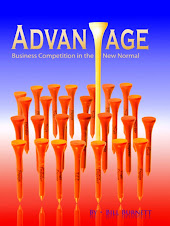Robert Galvin ran Motorola for 30 years making it into perhaps the best company in the world at the time. He focussed a lot of his attention on innovation, problem solving and leadership. He came to see them as inexorably linked.
At one point he was concerned that too many questions, problems and decisions were bucked up to the top people in the company. He believed that many of the men and women in the labs, offices and factories were more than capable of dealing with most of these. Yet, the structure did not allow them to exercise that level of decision making.
Galvin urged certain of his managers to work out a problem solving methodology to involve those closest to the subjects. This initiative proved fruitless. With time it dawned on Galvin that the common believe in manager’s wisdom over worker’s wisdom was too entrenched.
He tried different techniques himself. At one point he and Walter Scott, who was heading the largest manufacturing operation at the time started a series of unstructured meetings. Other teams started other initiatives. Eventually they developed a methodology called Participative Management Program.
Motorola’s early efforts in tapping into the judgements and decision making capabilities of the broader workforce led Galvin to recognize he was actually tapping into leadership qualities of all these people. Eventually he came to appreciate the depth of this leadership capability in all people. It was greater that traditionally thought. He said, “Their full potential is yet to be fully tapped. Of this I feel confident, our people at all levels of responsibility will rarely be found wanting as the appreciation of their qualities are more evidently invited and trusted.” In other words, people will rarely fail to come up to the level expected of them.
Later, one of these invited and trusted groups led a grass-roots initiative by some Motorola engineers to look at defect rates differently. Their method became a product whose trademark belongs to Motorola - “Six Sigma”.
(Our methodology, Behavioral Advantage, uses Galvin’s insights into people as a foundation, then we supercharge the ideas using some more recent psychological insights that Galvin would have loved.)







No comments:
Post a Comment